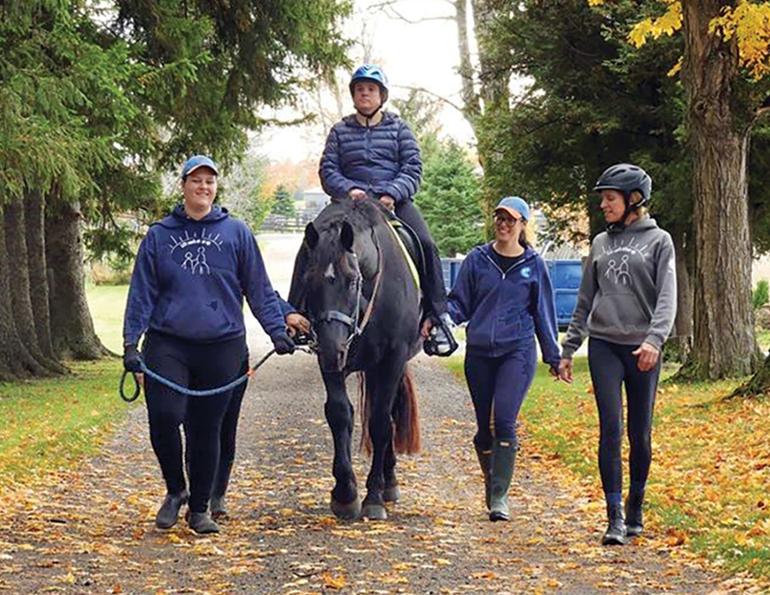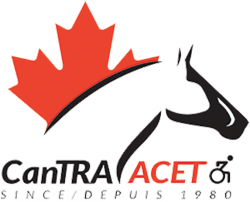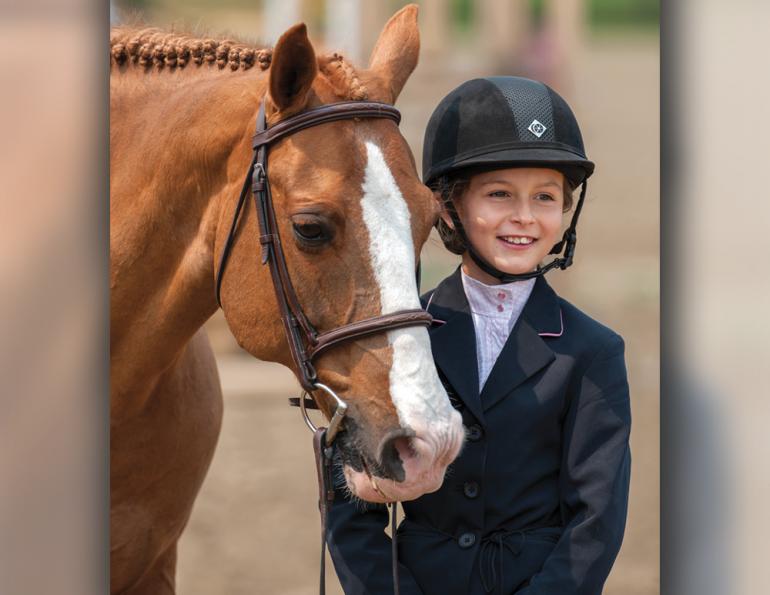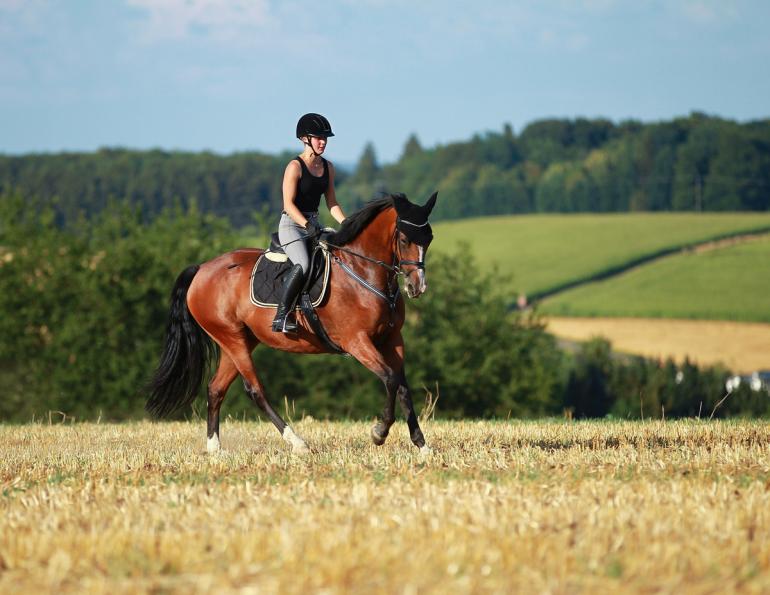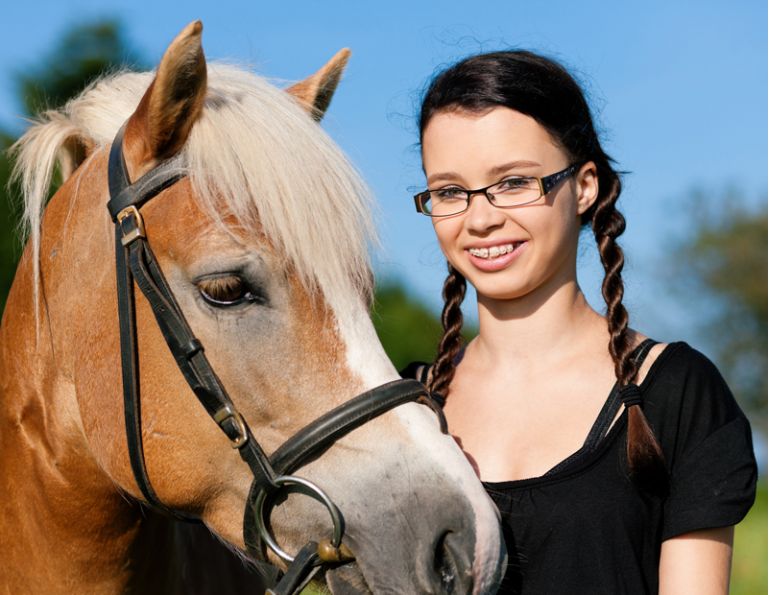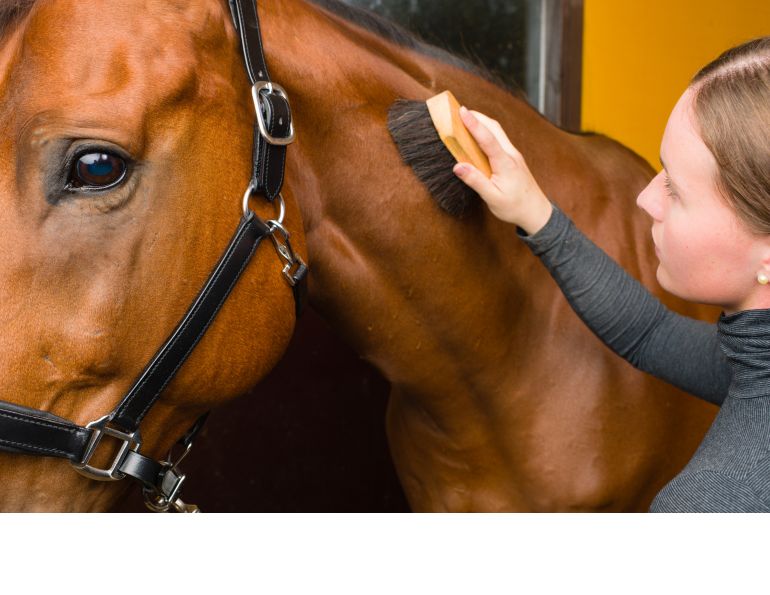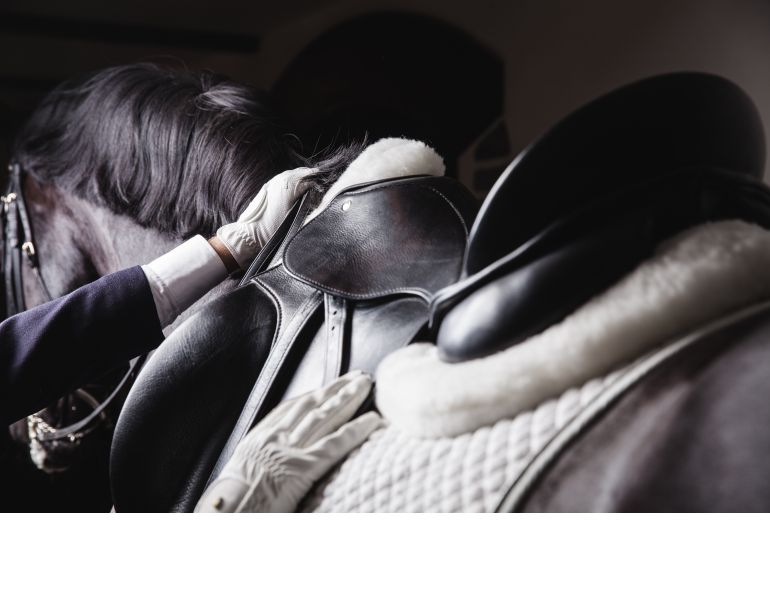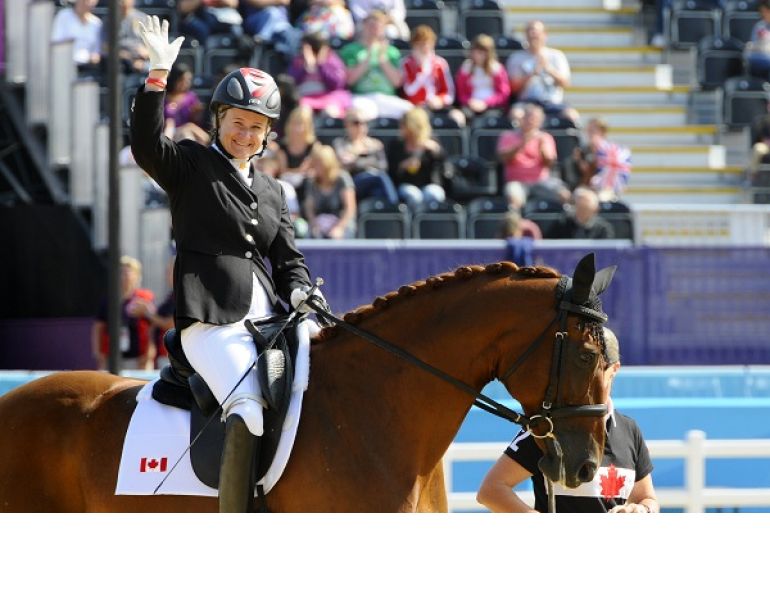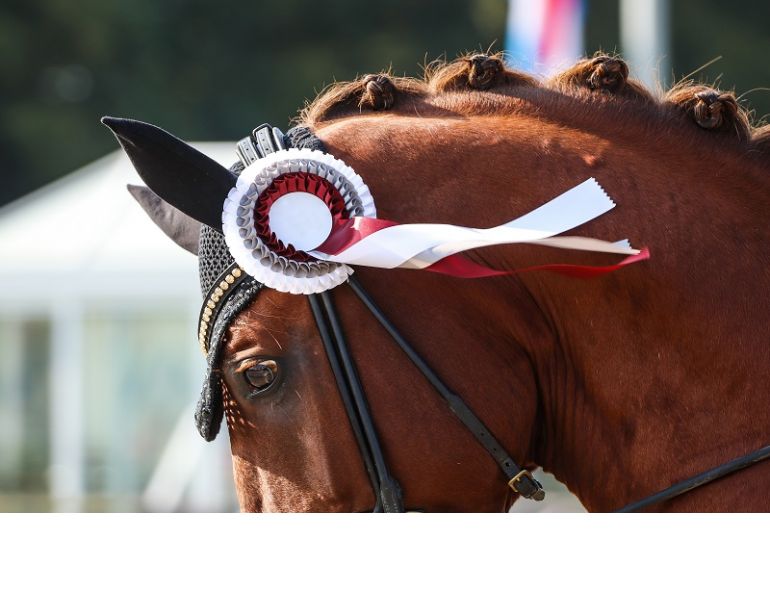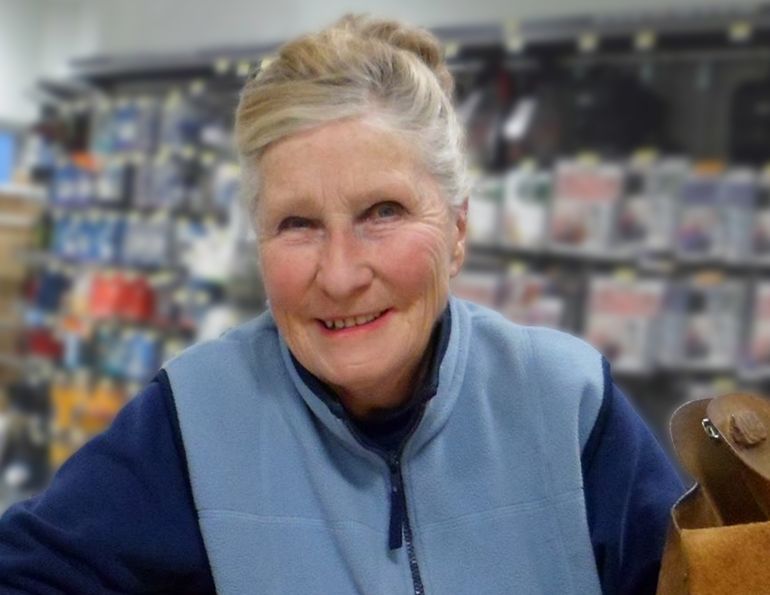By Christine Ross, CanTRA Coach, CanTRA Vice President
There are dozens of Canadian Therapeutic Riding (CanTRA) programs across the country. Most are registered charities or not-for-profit organizations, and volunteers are very important in helping these programs to thrive and flourish. It is important to check that the program near you is a member of CanTRA, and therefore operating from an accredited facility with CanTRA certified instructors.
If you have experience working with horses and want to share these skills, volunteering as a leader (horse handler) in a therapeutic riding program can be very meaningful and rewarding. If you would love to work with horses and support children and adults with special needs, but do not have previous experience with horses, you may consider joining a program as a side-walker.
Volunteers are a very important part of providing a safe and enjoyable experience for riders with special needs. Safety is of prime importance in therapeutic riding, beginning with a CanTRA certified instructor, and supported by a knowledgeable volunteer to lead the horse with one or two trained side-walkers to support and encourage the rider. Training specific to working with riders with special needs and the program horses is provided by all CanTRA programs. Whether you volunteer as a leader or side-walker, this is a great way to maintain your exercise and fitness level while giving back to your community.

Brooklyn riding Miami with volunteer leader and side-walkers at Sunrise Therapeutic Riding & Learning Centre, Puslinch, ON. Photo: Sydney Holmes
The Role of the Leader
It is advantageous for leaders to have previous knowledge of working around horses, and CanTRA certified instructors then provide the additional training specific to working in a therapeutic riding program. The leader is particularly important in maintaining gentle and quiet control of the horse during the mounting and dismounting of the rider.
During lessons the leader is solely responsible for the well-being and control of the horse, following the directions of the certified instructor. An experienced leader has a good deal of sensitivity to the horse with whom they work and has a thorough knowledge of the horse’s body language. The leader also learns to be conscious of the extent to which they influence the horse and to what extent the rider is in control. A more advanced rider will control the horse by themselves, and the leader has to allow this and at the same time be there in case assistance is needed.
The Role of the Side-Walker
Side-walkers play a very different role, being there to focus entirely on the rider, giving encouragement and support as needed. A side-walker can gently reinforce the directions given by the Instructor, such as the coordination of an exercise, with hand-over-hand assistance.
For a rider with physical limitations with balance or muscle tone, side-walkers learn different ways of supporting the rider to help them gain confidence and maintain their riding position. The type of support is directed by the Instructor, often with input from a therapist. During the volunteer training the side-walker will learn the different supports which are designed to keep the rider secure, safe, and balanced. Riders form a special bond with their side- walkers in addition to the bond with their horse. Many side-walkers develop long-term relationships with their riders and share in the progression that takes place.
For readers wishing to learn more about these volunteer opportunities, contact a CanTRA Therapeutic Riding Program near you, or the CanTRA Head Office at ctra@golden.net or by phone: 519-767-0700. The programs will be very pleased to receive your enquiry.
Main Photo: Meghan riding Zar with volunteer leader and side-walkers at Sunrise Therapeutic Riding & Learning Centre, Puslinch, ON. Credit: Sydney Holmes



